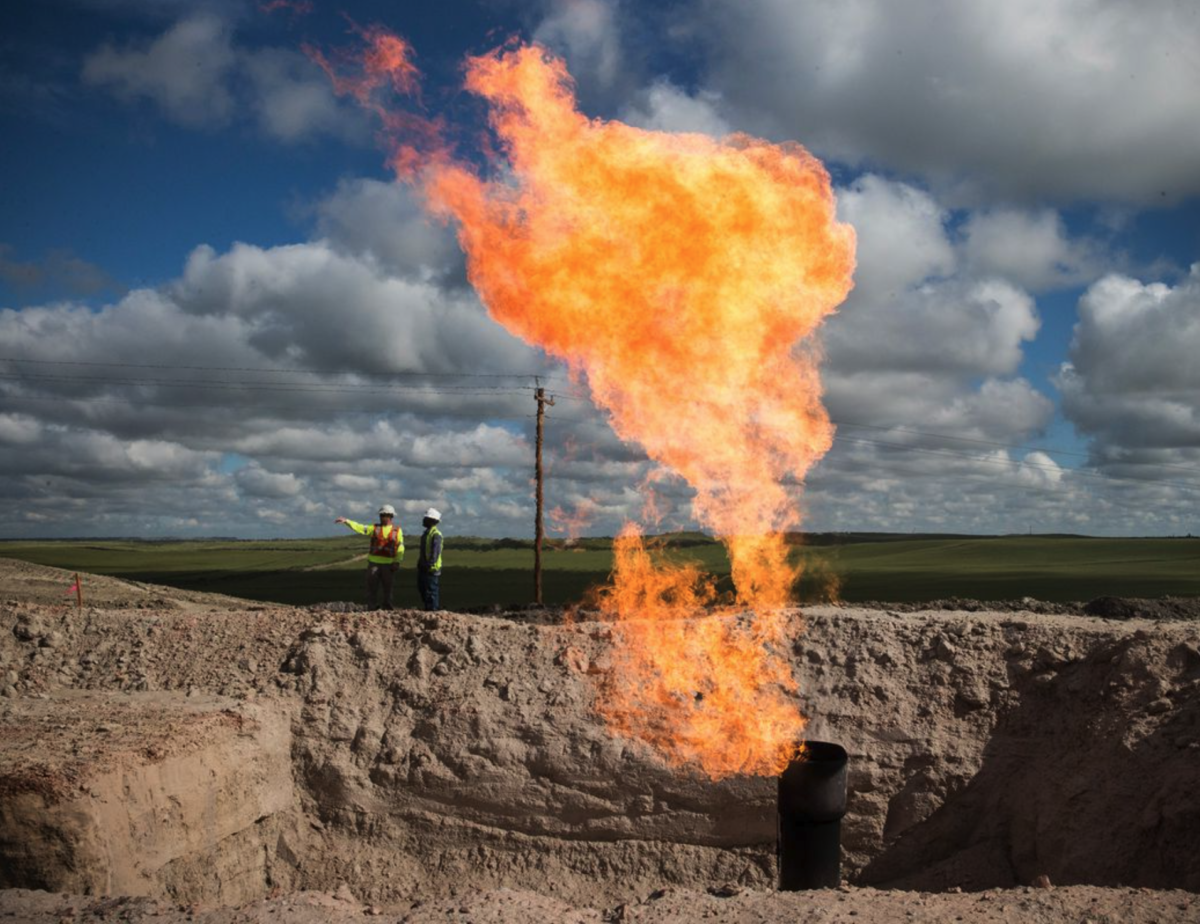Staff Report –
WASHINGTON, D.C. — The Biden administration announced new funding options Monday to reduce methane emissions, a major greenhouse gas that leads to climate change due to global warming from the burning of fossil fuels for energy and transportation.
Methane is the primary contributor to the formation of ground-level ozone, a hazardous air pollutant and greenhouse gas, exposure to which causes 1 million premature deaths every year, according to the United Nations and other sources.
Methane is also a powerful greenhouse gas. Over a 20-year period, it is 80 times more potent at warming the planet than carbon dioxide. Methane has accounted for roughly 30 per cent of global warming since pre-industrial times and is proliferating faster than at any other time since record keeping began in the 1980s. In fact, according to data from the United States National Oceanic and Atmospheric Administration, even as carbon dioxide emissions decelerated during the pandemic-related lockdowns of 2020, atmospheric methane shot up.
The Environmental Protection Agency announced the move along with the Department of Energy and DOE’s National Energy Technology Laboratory. A notice of intent was filed in the Federal Register announcing the first in a series of funding opportunities to monitor and reduce methane emissions from the oil and gas sector and for environmental restoration of well sites.
“Methane is one of the biggest drivers of the climate crisis,” the agency says in the press release making the announcement.
Through a newly initiated Interagency Agreement, EPA and DOE will also partner to offer technical assistance to help companies monitor and reduce methane emissions from leaks and daily operations. Through this combination of technical and financial assistance, EPA and DOE will help reduce inefficiencies of U.S. oil and gas operations, create new jobs in energy communities, and realize near-term emission reductions, the release says. “These funding opportunities are made possible by (passage of) President Biden’s Inflation Reduction Act.”
“The amount of methane emitted from oil and gas operations is enough to fuel millions of homes a year and is a major driver of the climate crisis,” said Joe Goffman, Principal Deputy Assistant Administrator for EPA’s Office of Air and Radiation. “These programs will help minimize that waste, a benefit for nearby communities and businesses alike.”
As described in the notice of intent, EPA and DOE will provide up to $350 million in formula funding to eligible states to assist industry to voluntarily identify and permanently reduce methane emissions from low-producing (marginal) conventional wells.
“Methane’s potency as a greenhouse gas makes targeted emissions reduction efforts essential to slow the rapid rate of climate change,” said Brad Crabtree, Assistant Secretary of Fossil Energy and Carbon Management. “These programs will help states and industry to accelerate methane monitoring and mitigation efforts, which will increase efficiency and reduce costs for oil and gas producers, while providing long lasting climate and health benefits to communities across the nation.”
These investments are expected to improve the economic competitiveness of small and medium-sized producers while reducing associated harmful air pollution, mitigating health effects in nearby communities, and creating jobs in energy communities. States also will be able to use a portion of their award for environmental restoration and to invest in their monitoring capacity for low-producing conventional wells, which will improve their ability to identify sources of methane emissions and to effectively prioritize their mitigation. The full funding opportunity will be announced later this summer.
Following this non-competitive solicitation, the agency says, EPA and DOE intend to offer one or more additional competitive solicitations to monitor and mitigate methane emissions from the oil and gas sector, which will be available to a broader range of applicants. These subsequent funding opportunities are expected to advance the deployment of technologies and practices to monitor and reduce emissions of methane and other greenhouse gases. A separate financial assistance program for Tribal governments is also expected to be offered.
In addition to funding opportunities, through this collaboration, EPA and DOE will provide technical assistance to help states, industry, and other partners implement cost-effective solutions that reduce methane leak emissions. The agencies will support small and medium-sized producers that often lack the capital and expertise of the larger oil and gas companies and will work with partners to implement and prioritize best practices and mitigation decision-support tools across the broader oil and gas sector. This technical assistance will also ensure efforts are fully aligned with the needs of local communities and help inform key decision-makers of mitigation opportunities across states, industry and other partners.
The Methane Emissions Reduction Program, created by the Inflation Reduction Act, provides $1.55 billion in funding, including financial and technical assistance to improve methane monitoring and reduce methane and other greenhouse gas (GHG) emissions from the oil and gas sector with the co-benefit of reducing non-GHG emissions such as volatile organic compounds and hazardous air pollutants. The program allows financial and technical assistance for a number of activities, including: preparing and submitting greenhouse gas reports, monitoring methane emissions, and reducing methane and other greenhouse gas emissions by improving and deploying equipment, supporting innovation, permanently reducing wasteful methane emissions from low-producing conventional wells, mitigating health effects in low-income and disadvantaged communities, improving climate resiliency, supporting environmental restoration, and mitigating legacy air pollution.














